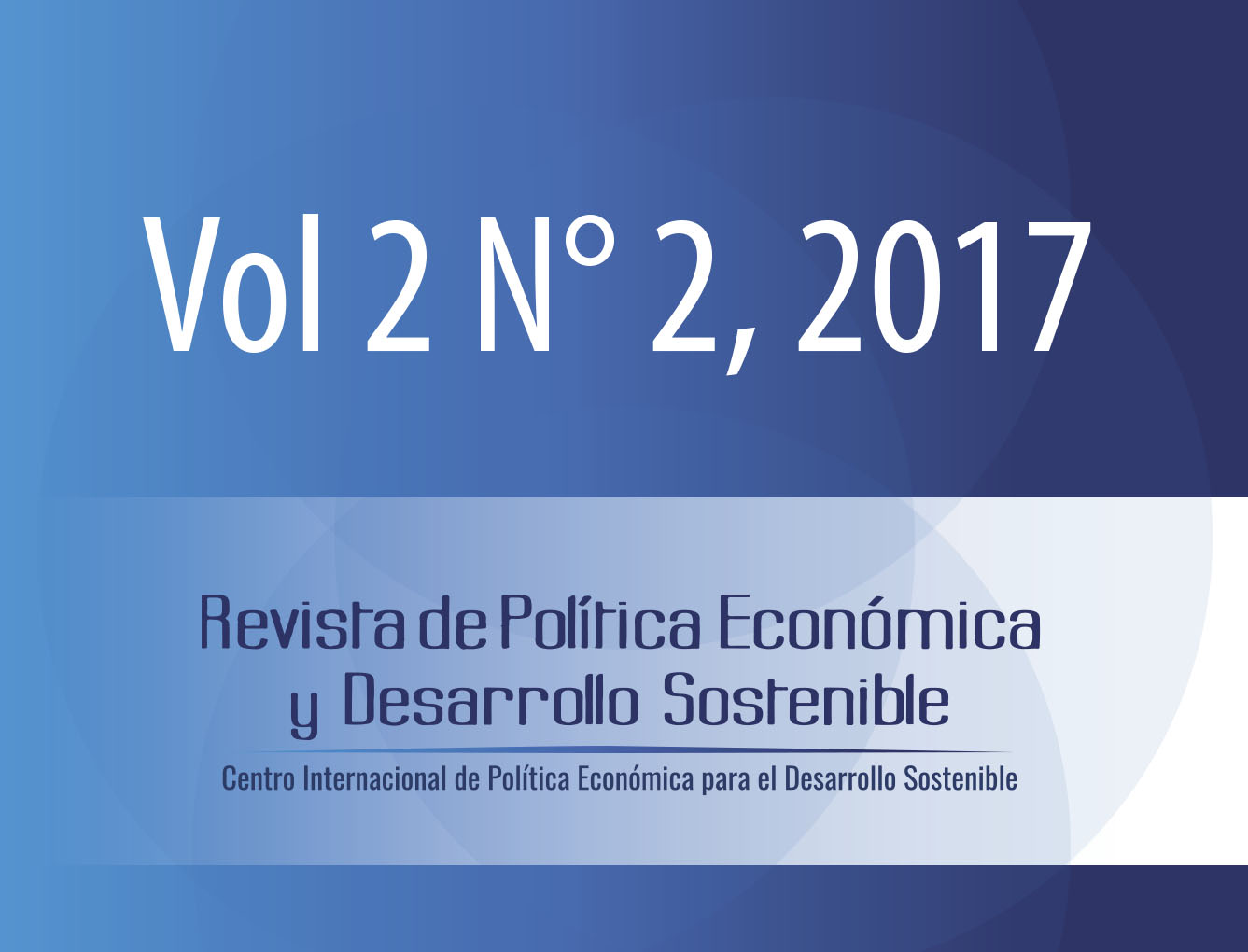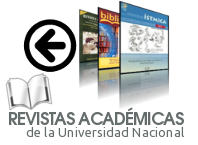Actividades Socioeconómicas que emplean recursos naturales de la zona marítimo-terrestre y marina en Costa Rica y su relación con la variabilidad climática
DOI:
https://doi.org/10.15359/peds.2-2.1Keywords:
Costa Rica, Central America, coastal area, tourism, marine fisheries, climatologyAbstract
Climate variability could have negative effects on the productivity of coastal zone activities. Because of the above and because Costa Rica is a country in which coastal activities, related to natural resources, have great social and economic relevance, in the present article an analysis is made to verify if these effects are presented and to provide tools for making Decisions in these areas. For the above, a characterization of the fishing and the tourist sector for the period 1990-2005 is made. The amount of artisanal and industrial fishing is related, the number of tourists, hotels and rooms in coastal areas with some climatic variables in order to identify the main interactions between them. The climatic variables used were Sea Surface Temperature (SST) and Precipitation (P). Pearson correlation coefficients were used between productive and climatic variables. When correlating the different climatic variables with the amount of fishing it was found that when the coefficient was statistically significant, the climatic variable in all cases has negative correlations with the catches, that is to say when it increases for example the SST of the Sea decreases the amount of fishing. In the case of tourism, the coefficients were not statistically significant in the annual variables but in the quarterly ones. The methodology applied in this article can be used to make inferences about the behavior of productive variables for specific periods (quarter for example) in the face of climatic variations and to take measures to mitigate the impact.
References
Alfaro, E., Quesada, A. & Solano, F. (2010). Análisis del Impacto en Costa Rica de los Ciclones Tropicales ocurridos en el Mar Caribe desde 1968 al 2007. Diálogos Rev. Electr. Hist., 11(2), 22-38. Recuperado de https://revistas.ucr.ac.cr/index.php/dialogos/article/view/578/640
Alfaro, E. (2007). Escenarios climáticos para temporadas con alto y bajo número de huracanes en el Atlántico. Revista de Climatología, (7), 1-13.. Recuperado de: http://webs.ono.com/reclim2/reclim07a.pdf
Amador, J. A., Alfaro, E., Rivera, E. & Calderón, B. (2010). Climatic Features and Their Relationship with Tropical Cyclones Over the Intra-Americas Seas. En J.B. Elsner et al. (Eds.), Hurricanes and Climate Change (pp. 149-173). New York, EE. UU.: Springer. https://doi.org/10.1007/978-90-481-9510-7_9
Asamblea Legislativa. (1977). Ley No. 6043. Ley Sobre la Zona Marítimo Terrestre. La Gaceta, 52.
Brenes, C. (2010). El fenómeno del niño 2009-2010: Pacífico centroamericano y pesquerías. UNA-OSPESCA. Recuperado de http://www.google.co.cr/url?sa=t&rct=j&q=&esrc=s&source=web&cd=1&ved=0CBwQFjAA&url=http%3A%2F%2Fwww.sica.int%2Fbusqueda%2Fbusqueda_archivo.aspx%3FArchivo%3Dodoc_41706_1_02102009.pdf&ei=0TOQUJ_mLefL0QHvz4CgBg&usg=AFQjCNEJz_mEDYn20Enk4cW5Wk1Y7KCCFQ
Chang, G. & Del Rio, X. (2004). Léxico de la Pesca Artesanal Puntarenense en el Golfo de Nicoya: Una aproximación etnográfica-semántica en Chomes, Costa de Pájaros, Isla Chira y Puntarenas Centro. Recuperado de http://www.vinv.ucr.ac.cr/latindex/kanina001/14-chang-delrio.pdf
Honey, M., Vargas, E. & Durham, W. (2010). Impacto del Turismo Relacionado con el Desarrollo en la Costa Pacífica Costa Rica. Washington D.C., EE.UU.: Center for Responsible Travel.
ICT (2011). Hoteles en Costa Rica por Región. Instituto Costarricense de Turismo. Recuperado de http://www.visitcostarica.com/ict/paginas/buscador/fcrbuscaprod.asp?idprod=1].
ICT. (2002-2005). Anuario de Turismo. Instituto Costarricense de Turismo. San José, Costa Rica: ICT
IMN. (2011). Los Huracanes y sus efectos en Costa Rica. Instituto Meteorológico Nacional (IMN). Recuperado de [http://www.imn.ac.cr/educacion/huracanes/huracan06.html].
INCOPESCA. (2011). Estadísticas pesqueras 1990-2005. Bases de datos. Instituto Costarricense de Pesca. San José, Costa Rica: INCOPESCA.
IPCC. (2013). Glosario [Planton, S. (ed.)]. En: Cambio Climático 2013. Bases físicas. Contribución del Grupo de trabajo I al Quinto Informe de Evaluación del Grupo Intergubernamental de Expertos sobre el Cambio Climático [Stocker, T.F., D. Qin, G.-K. Plattner, M. Tignor, S.K. Allen, J. Boschung, A. Nauels, Y. Xia, V. Bex y P.M. Midgley (eds.)]. Cambridge University Press, Cambridge, Reino Unido y Nueva York, NY, Estados Unidos de América.
IRI. (2011). Climate Data Library. Recuperado de http://iridl.ldeo.columbia.edu/index.html
Morales, A., Silva, M. & González, C. (2010). La Gestión Integrada de la Zona Costera en Costa Rica: Experiencias y Perspectivas. En J. M. Barragán (coord.), Manejo Costero Integrado y Política Pública en Iberoamérica: Un diagnóstico. Necesidad de Cambio (pp. 41-70). Cádiz, España: Red IBERMAR (CYTED).
Nienzy, B. & Malone, L. (2003, diciembre). Desafíos de la predicción climática y su aplicación en el sector Agrícola. Ponencia presentada en la Reunión Técnica de la Organización Meteorológica Mundial. Servicios de Información y Predicción del Clima (SIPC) y Aplicaciones Agrometeorológicas para los Países Andinos. Guayaquil, Ecuador.
NOAA. (2011). Changes to the Oceanic Niño Index (ONI). Recuperado de disponible en http://www.cpc.noaa.gov/data/indices/sstoi.atl.indices
OLDEPESCA. (2010). Efectos de las principales alteraciones atmosféricas y oceanográficas sobre la actividad pesquera de los países miembros de OLDEPESCA. San Francisco de Campeche, México: Organización Latinoamericana de Desarrollo Pesquero.
Parry, M., Canziani, O., Palutikof, J., Van der Linden P., & Hanson, C. (2007). Climate Change 2007: Impacts, Adaptation and Vulnerability. Contribution of Working Group II to the Fourth Assessment Report of the Intergovernmental Panel on Climate Change. Cambridge University Press, Cambridge, United Kingdom and New York. NY, EE.UU. pp.507-540. Recuperado de http://www.ipcc.ch/pdf/assessment-report/ar4/wg2/ar4_wg2_full_report.pdf
Plagányi, E., Weeks, S., Skewes, T., Gibbs, M., Poloczanska, E., Norman-López, A., Blamey, L., Soares, M. & Robinson, W. (2011). Assessing the adequacy of current fisheries management under changing climate: a southern synopsis, ICES. J. Mar. Sci. 6(68) 1305-1317. https://doi.org/10.1093/icesjms/fsr049
Rojas, A. (2008). Sitio y Situación de la Zona Marítimo Terrestre del Pacífico y Caribe Costarricense. Reflexiones, 87(1), 163-176.
Samaniego, J. (2009). Cambio Climático y desarrollo en América Latina y el Caribe: Una reseña. Santiago de Chile, Chile: CEPAL.
Schallenberg, M., Hall C. J. & Burns, C. W. (2003). Consequences of climate-induced salinity increases on zooplankton abundance and diversity in coastal lakes. Mar. Ecol. Prog. Ser., 251. 181-189. https://doi.org/10.3354/meps251181
Schatan, C., Montile, M. & Romero, I. (2010). Cambio climático y retos para el sector turismo de Centroamérica. Santiago de Chile, Chile: CEPAL.
SIGMAR (2005). Base de datos áreas marinas protegidas de Costa Rica. Proyecto: Desarrollo de un Sistema de Información Geográfica en el Centro de Investigación en Ciencias del Mar y Limnología (CIMAR). Universidad de Costa Rica.
Víquez, R. & Gutiérrez, A. (2005). Comportamiento de la Almadraba Japonesa en Tárcoles. Ambientico, 139. 15-17.
Víquez, R. & Sierra, L. (2005). Pesca Artesanal en Tárcoles, Costa Rica. Ambientico, 139. 13-14.
Wilks, D. (2011). Statistical Methods in the Atmospheric Sciences. San Diego, CA., EE. UU.: Academic Press.
Xie, P. & Arkin, P. A. (1996). Analyses of Global Monthly Precipitation Using Gauge Observations, Satellite Estimates, and Numerical Model Predictions. J. Climate, 9. 840-858. https://doi.org/10.1175/1520-0442(1996)009<0840:AOGMPU>2.0.CO;2
Xie, P. & Arkin, P. A. (1997). Global Precipitation: A 17-Year Monthly Analysis Based on Gauge Observations, Satellite Estimates and Numerical Model Outputs. Bull. Amer. Meteor. Soc., 78. 2539-2558. https://doi.org/10.1175/1520-0477(1997)078<2539:GPAYMA>2.0.CO;2







